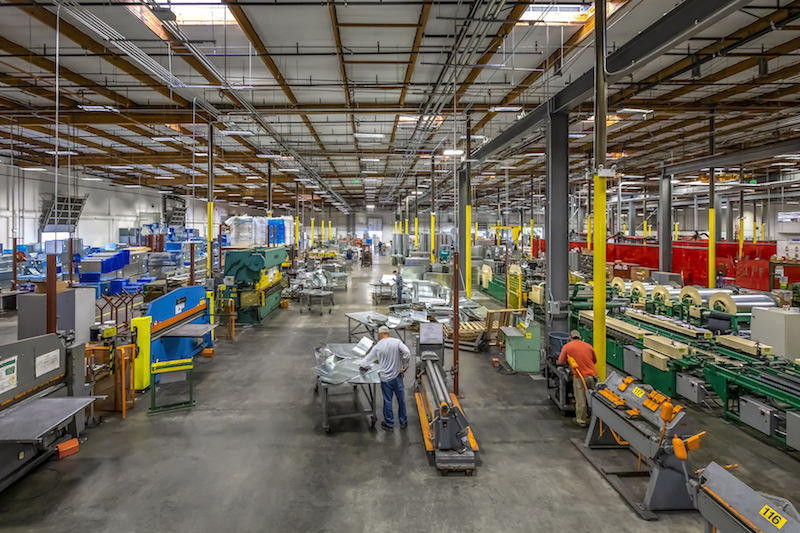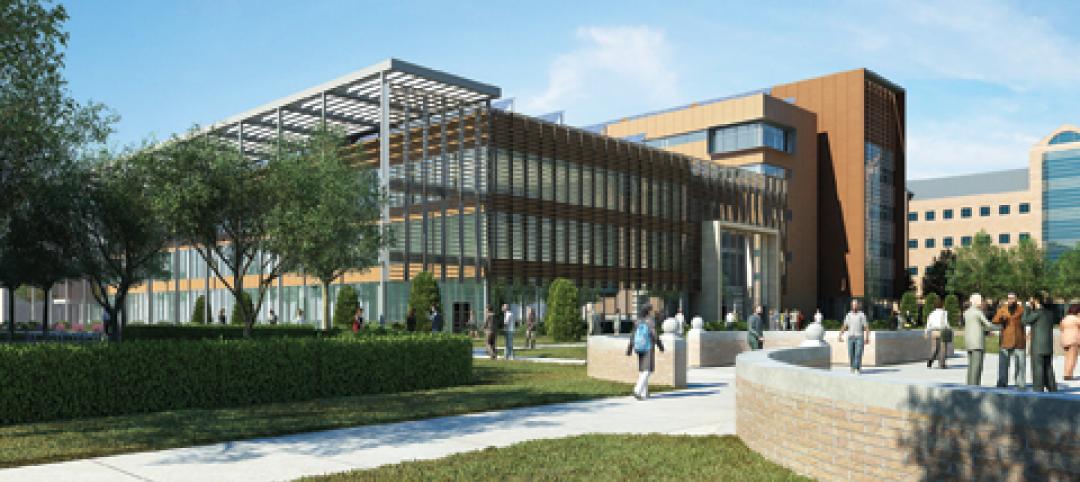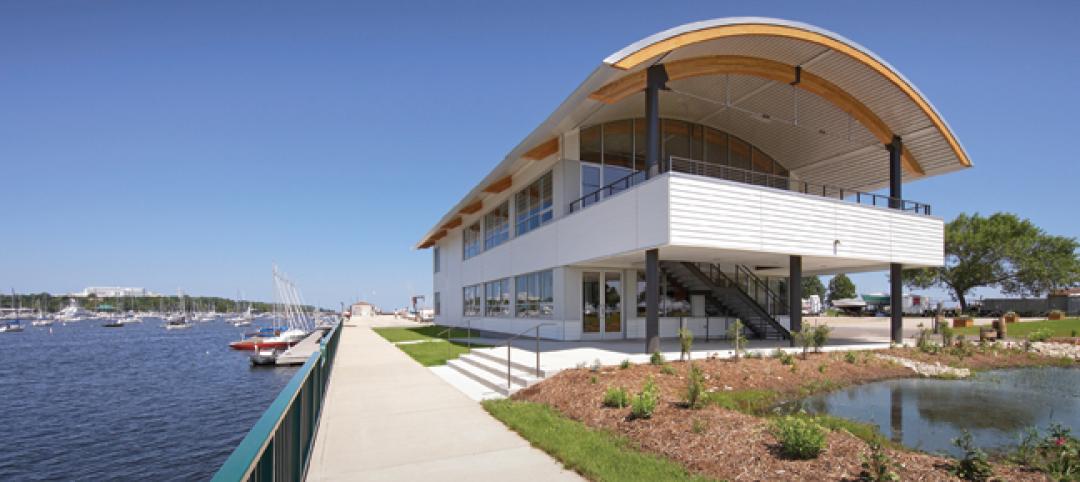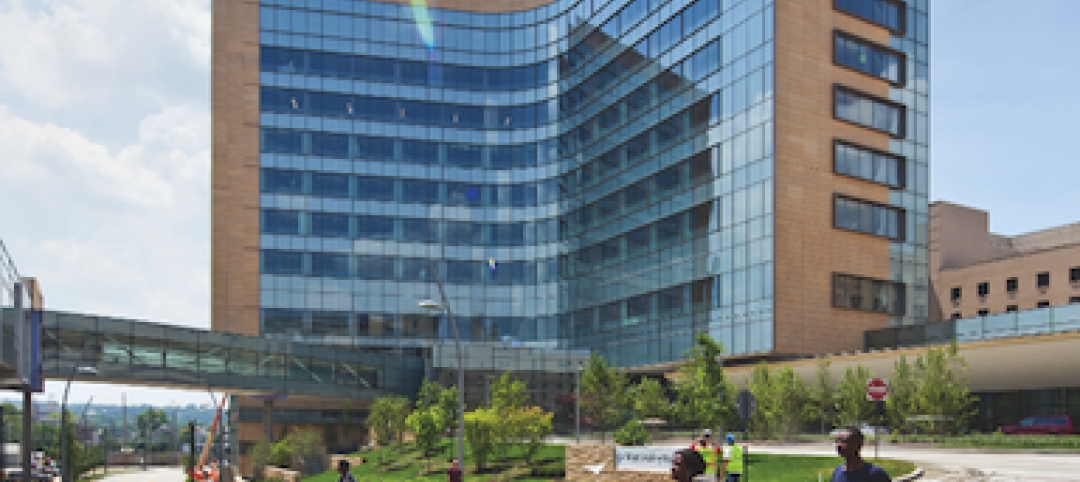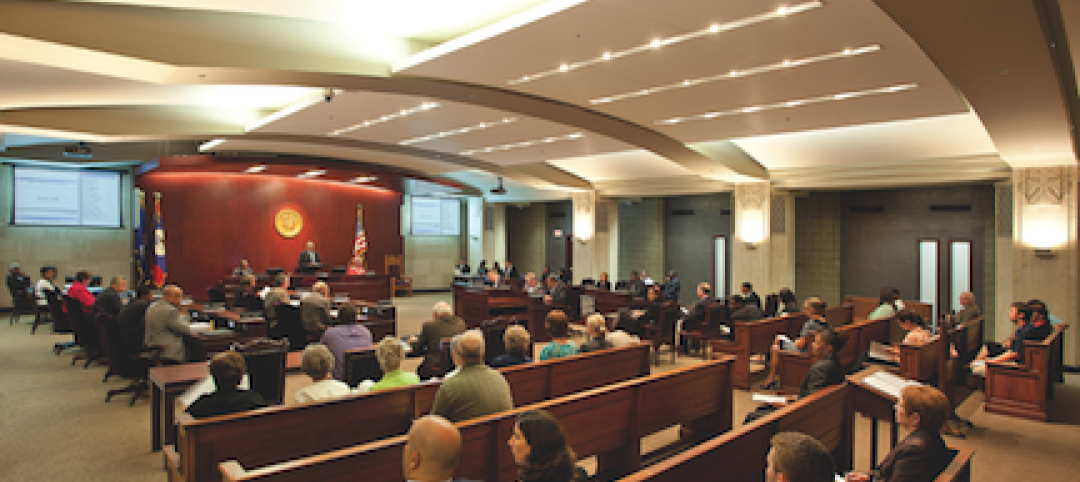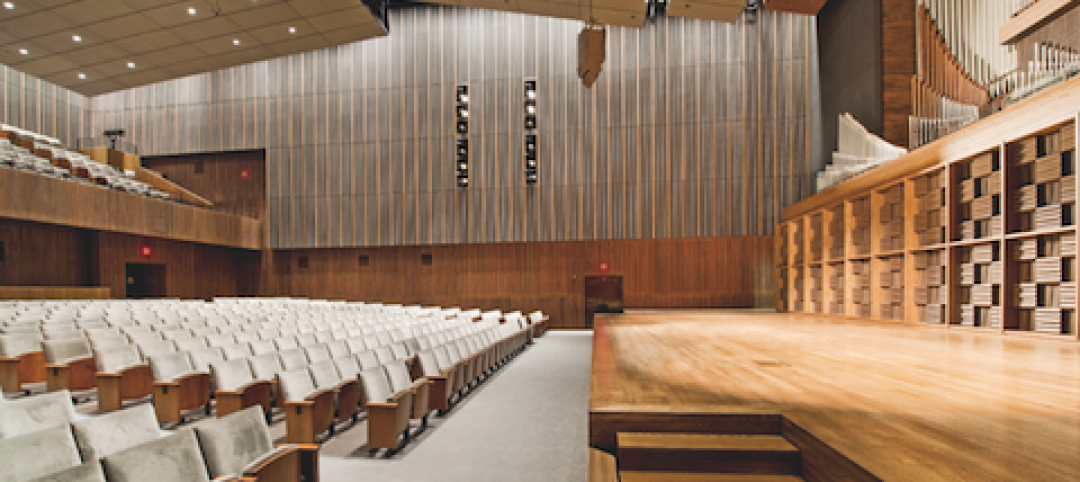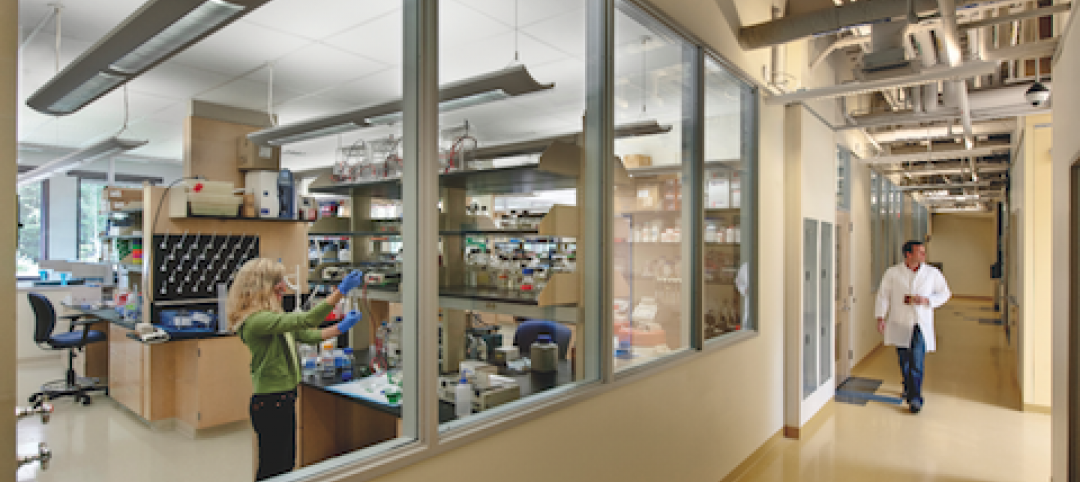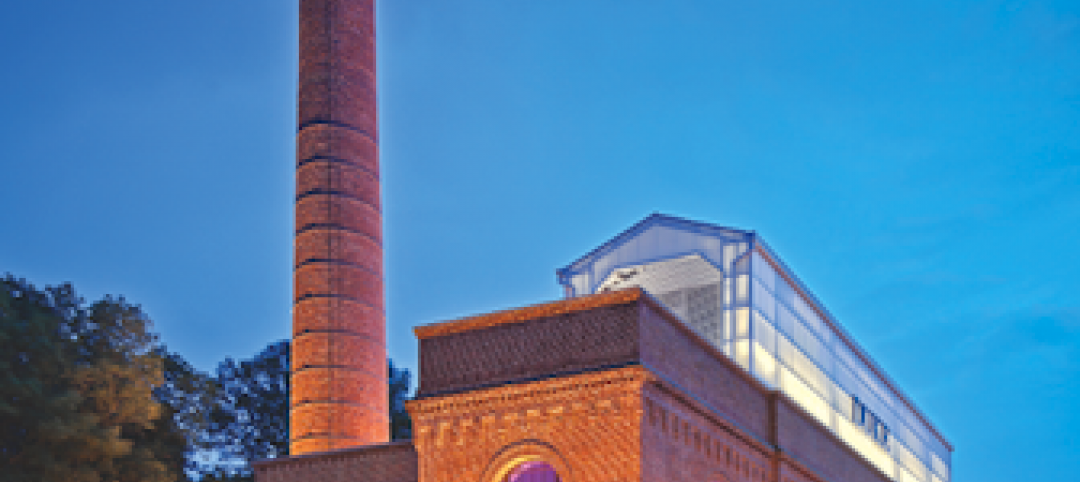It’s no secret that, despite improvements in its employment rate that rose steeply last month, the construction industry still struggles with labor shortages. In fact, 40% of construction companies turn down new projects because they don’t have enough skilled labor, according to the latest USG-Chamber of Commerce Commercial Construction Index, produced with Dodge Data & Analysts and based on responses from a Contractor Panel of more than 2,700 industry decision makers.
Most builders have already revved up their recruitment and training machines to attract and retain workers. Others are leaning into technology to find work-saving solution. Southland Industries, one of the industry’s largest MEP building systems firms, is also focusing on process refinement, training, and technology integration that bring into play, among other things, offsite construction and fabrication, data centralization and virtualization, the intersection of design engineering and detailing, and BIM to improve information delivery.
Judd Fuoto, Southland’s lead solutions analyst, tells BD+C that his large company, with its many priorities, is trying to achieve a balance that aligns its business and technology agendas. Southland is also trying to avoid the trap too many other companies fall for when they dive into new things without defining success or gauging risk.
“There’s a lot of software solutions out there looking for problems,” he says. “And that software often addresses specific things but doesn’t play nice with each other.”
Southland’s methodology is to document its workflow and to let the results prompt process improvements. It has also overhauled its technology governance so that “we’re staying aligned with what’s important and what’s effective.”
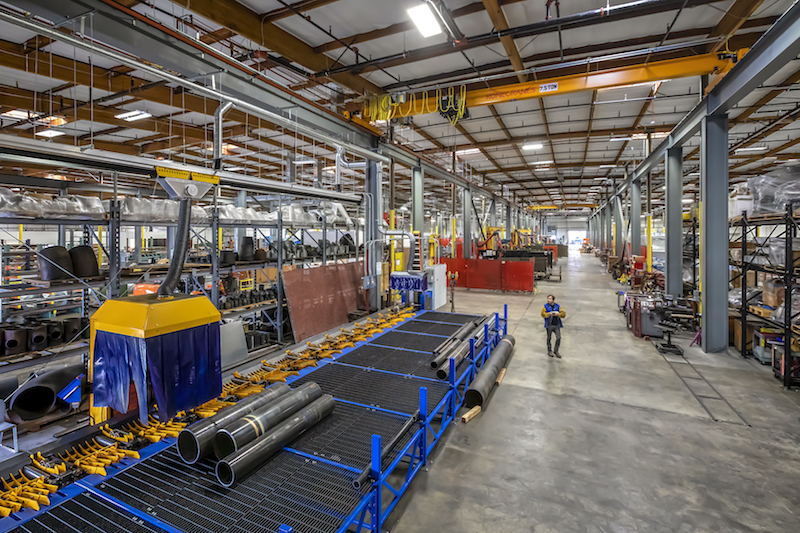
Southland's new office space and fabrication facility in Southern California, built by H. Hendy Associates, is laid out to create synergy among processes and worker teams. Hendy even measured the number of steps it would take employees to get to key areas, and designed pathways through the floor plan to support the quickest navigation patterns. The facility also includes a new R&D center. Image: Southland Industries
Fuoto concedes that some measurements so far have been anecdotal, and some are trackable “if we hit intended targets.” But there have been noteworthy gains. By automating its plants’ commissioning Southland has improved worker capacity by an average of 45 minutes per person per day, according to a recent poll with responses from 115 workers in the field.
At the very least, says Fuoto, it’s important for companies in this industry to determine what problems they are trying to solve, and then find the tools needed, instead of “chasing after every shiny gadget” first and then trying to apply them to their company’s operations.
“Will the tool augment or disrupt your process” is what all companies, including Southland, need to keep asking themselves before they make costly investments in software, equipment, or even factories.
Related Stories
| Mar 17, 2011
Hospitality industry turns to HTS Texas for ‘do not disturb’ air conditioned comfort
Large resort hotels and hospitality properties throughout the Southwest have been working with local contractors, engineers and HTS Texas for the latest innovations in quiet heating, ventilating and air conditioning (HVAC) equipment. The company has completed 12+ projects throughout Texas and the Southwestern U.S. over the past 18 to 24 months, and is currently working on six more hotel projects throughout the region.
| Dec 17, 2010
New engineering building goes for net-zero energy
A new $90 million, 250,000-sf classroom and laboratory facility with a 450-seat auditorium for the College of Electrical and Computer Engineering at the University of Illinois at Urbana/Champaign is aiming for LEED Platinum.
| Nov 9, 2010
U.S. Army steps up requirements for greening building
Cool roofs, solar water heating, and advanced metering are among energy-efficiency elements that will have to be used in new permanent Army buildings in the U.S. and abroad starting in FY 2013. Designs for new construction and major renovations will incorporate sustainable design and development principles contained in ASHRAE 189.1.
| Nov 3, 2010
Sailing center sets course for energy efficiency, sustainability
The Milwaukee (Wis.) Community Sailing Center’s new facility on Lake Michigan counts a geothermal heating and cooling system among its sustainable features. The facility was designed for the nonprofit instructional sailing organization with energy efficiency and low operating costs in mind.
| Oct 13, 2010
Prefab Trailblazer
The $137 million, 12-story, 500,000-sf Miami Valley Hospital cardiac center, Dayton, Ohio, is the first major hospital project in the U.S. to have made extensive use of prefabricated components in its design and construction.
| Oct 12, 2010
Guardian Building, Detroit, Mich.
27th Annual Reconstruction Awards—Special Recognition. The relocation and consolidation of hundreds of employees from seven departments of Wayne County, Mich., into the historic Guardian Building in downtown Detroit is a refreshing tale of smart government planning and clever financial management that will benefit taxpayers in the economically distressed region for years to come.
| Oct 12, 2010
Gartner Auditorium, Cleveland Museum of Art
27th Annual Reconstruction Awards—Silver Award. Gartner Auditorium was originally designed by Marcel Breuer and completed, in 1971, as part of his Education Wing at the Cleveland Museum of Art. Despite that lofty provenance, the Gartner was never a perfect music venue.
| Oct 12, 2010
Cell and Genome Sciences Building, Farmington, Conn.
27th Annual Reconstruction Awards—Silver Award. Administrators at the University of Connecticut Health Center in Farmington didn’t think much of the 1970s building they planned to turn into the school’s Cell and Genome Sciences Building. It’s not that the former toxicology research facility was in such terrible shape, but the 117,800-sf structure had almost no windows and its interior was dark and chopped up.
| Oct 12, 2010
Full Steam Ahead for Sustainable Power Plant
An innovative restoration turns a historic but inoperable coal-burning steam plant into a modern, energy-efficient marvel at Duke University.
| Sep 30, 2010
Luxury hotels lead industry in green accommodations
Results from the American Hotel & Lodging Association’s 2010 Lodging Survey showed that luxury and upper-upscale hotels are most likely to feature green amenities and earn green certifications. Results were tallied from 8,800 respondents, for a very respectable 18% response rate. Questions focused on 14 green-related categories, including allergy-free rooms, water-saving programs, energy management systems, recycling programs, green certification, and green renovation.


